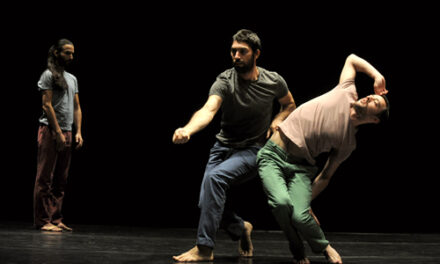This past Sunday, the award-winning Asheville chamber group Pan Harmonia returned for its first live November performance in two years. Taking place at the atmospheric and resonant First Presbyterian Church of Asheville, Kate Steinbeck (flute) and John Crawley (piano) took the stage for a program of an “unconventional” repertoire, featuring mainly American and women composers. As Steinbeck stated, the program “is about spirit” and what it means to have picked yourself up again after hardships and troubles.
The program began with “Achat Sha’alti” (1991) by Paul Schoenfield. The composition is based on the fourth verse of Psalm 27, found in the Old Testament. It is a piece full of hearty contemplations, gorgeous tonalities, and intertwining melodic lines. It truly set the tone and mood for this intimate recital and was a smart choice as an opener. It was easy to see that Steinbeck and Crawley are comfortable playing with one another. They breathed in sync and seemed naturally attuned to how the other expresses music.
Another piece played by the duo that exemplified their partnership was Philip Glass‘ “Love Divided By” (1992). Glass is a pioneer in the musical style known as “minimalism,” usually characterized by incessant repetitions of motifs, sometimes morphing slowly over the course of a piece. Don’t be fooled by the seeming simplicity of these pieces, when often they require more focus to stay on track. Steinbeck explained some of these difficulties to the audience. The piece is trancelike and meditative, and yet it contains so much motion.
Both Steinbeck and Crawley played solo pieces, and it is my opinion that these two pieces were the best of the program. Steinbeck performed Katherine Hoover‘s “Spirit Flight,” a soaring piece for solo flute. Hoover was heavily inspired by the music of the American Southwest and Native American nations. The piece uses a free tempo, alternate fingerings, bending notes, and alternative breathing techniques, which made for a unique addition to the program. It is highly idiomatic for the flute and displays the performers skill. Crawley also had his time in the spotlight, playing “Sketches in Sepia” by Florence Price, a resplendent piano piece with warm tonalities and two alternating sections. For my taste, Crawley’s pedaling throughout the piece was excessive and the articulations were too soft and undefined, but his overall interpretation still made for a lovely performance.
The performance ended with Philippe Gaubert‘s Sonata No. 1 for Flute and Piano (1917). This piece was the only one not composed by an American, which provided a different nationalistic sound. It was filled with those dreamy, simplistically elegant, and delicate sounds so often achieved by the French composers. The first movement was a personal favorite, reminding me of the minimalistic nature of the Glass piece. It contained several repeating motifs that returned to surprise the listener, almost relentless in its repetition. Steinbeck offered that this was composed during the “Great War,” as WWI was known at the time, and she drew a parallel to the relentlessness of war and how the piece may be connected to it. I loved watching both Steinbeck and Crawley move through this piece together, and I couldn’t help but appreciate the work these two must have put into such a difficult composition.
The program lineup was what made this recital so fantastic. To hear music by women composers without the distinction of it being “women’s music” was incredibly refreshing. It was simply music. Along with the inclusion of more modern composers (within the last century or so) and featuring mainly Americans, it was a unique listening experience. The performance is available on First Presbyterian Church of Asheville’s YouTube channel.











